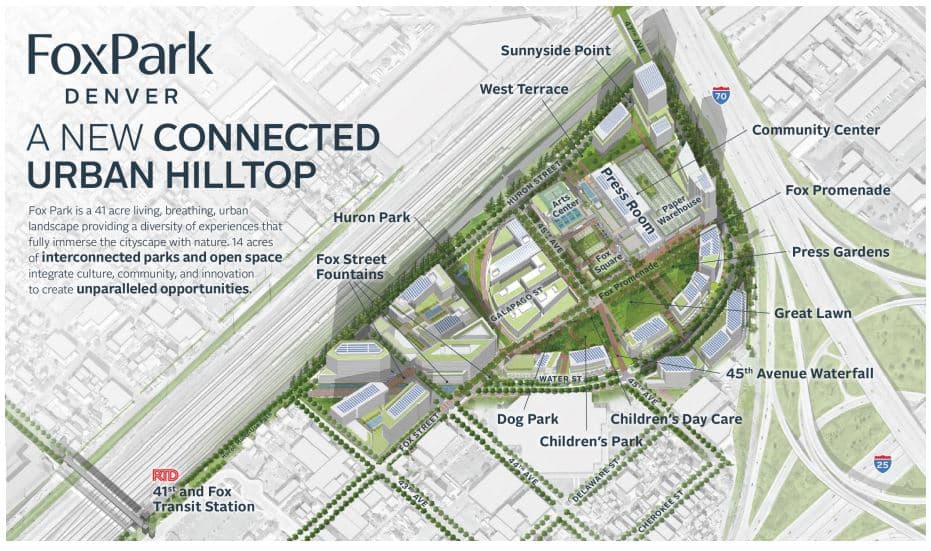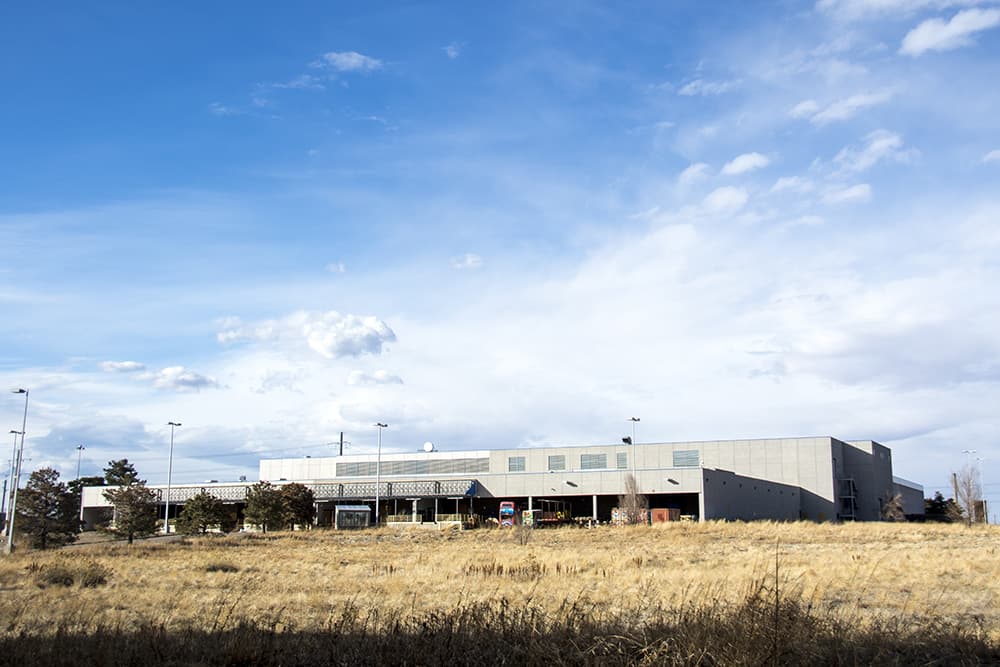Housing, retail and office space, hotel rooms and tons of underground parking spots are now closer to coming to a part of central Denver that's been unused for more than a decade.
On Monday, Denver City Council voted 12-1 to formally recognize a small area called Fox Park as "blighted," in effect making it an urban renewal area. It's a big step in redeveloping the site since the new designation allows tax increment financing (more on that in a bit) to be used to develop the land and make it attractive to developers. The site is up the road from the 41st and Fox RTD Station in the Globeville neighborhood.
Councilmember Candi CdeBaca, whose district includes the site, voted no, saying tax increment financing does not create enough protections for the surrounding communities in the area.
The redevelopment plan was proposed by the Denver Urban Renewal Authority, more commonly known as DURA, which is responsible for identifying areas in the city that are deteriorated, underused or vacant and working with private developers to figure out how to redevelop those sites.
The 41-acre parcel is home to the old Denver Post printing facility. The area is bordered by I-70 to the north, 45th Avenue to the east, Fox Street to the south, and rail yards to the west. The site has sat vacant for 12 years, according to city documents.

Vita Fox North LLP, a partnership by Pure Development, bought the site for $56.5 million in 2019. DURA Executive Director Tracy Huggins said the agency will conduct environmental remediation on the site, build roads, install sewage lines and build parks.
The project will utilize tax increment financing, which uses sales and property taxes generated by completed projects on the site (like an apartment complex or a hotel) to pay back the developer that builds out the infrastructure. It's a way for a project to essentially pay for itself, and it works as an incentive to help attract developers, Huggins explained.
"The site in its current state, while it's generating some amount of property tax, it isn't very much," Huggins said. "There is no sales tax being generated. But as that vertical development happens, that will generate new or incremental sales in property taxes that, again, DURA will be able to capture over 25 years, and will use those amounts to help defray the costs of infrastructure needs that site is requiring."
Manuel Jiménez of Pure Development, the company developing the site for future development, did not immediately return a request for comment on Monday.

Plans to redevelop this site have been in the works for several years.
The area was successfully rezoned in 2018 to allow for buildings up to 12 stories tall. The current vision for the site includes more than 3,300 apartment units, 1.9 million square feet of office space and more than 5,500 underground parking spaces. The developer has agreed to require 7% of the new apartment units to be income-restricted for 99 years. Those units would only be available to people making up to 80 percent of the area median income or less, so up to $55,950 a year or less for an individual.
Plans call for a children's park, a dog park, a daycare, and community and cultural centers. It would all be constructed in phases over the next eight to 10 years, starting in 2023.
The developer is signing an agreement with neighborhood groups, including Globeville First and the Globeville Elyria Swansea Coalition, that outlines some of the ways the development will benefit the people who live in the area. This includes creating a homeownership affordable housing fund in partnership with Habitat for Humanity and offering $12,000 a year in grants to support programs for young people in the neighborhood.
Monday marked the first time lawmakers have deemed an area blighted since they approved the tag for an acre around the Cathedral High School & Sisters of Charity Convent Building on Grant Street last year.
That was a pretty small area, though; for a more apples-to-apples comparison, you would have to go back to August 2019, when lawmakers deemed a portion of the East Colfax corridor blighted, affecting multiple homes and businesses along the strip.













